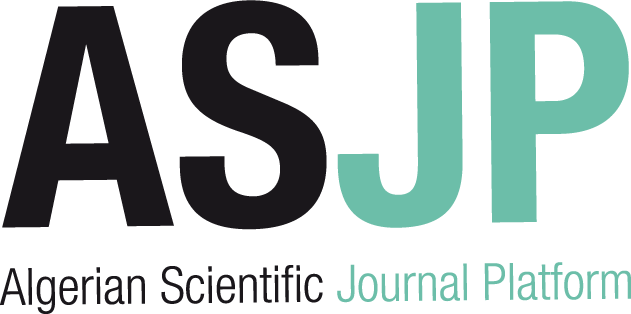[article]
| Titre : |
Hybrid modeling of methane reformers. 3 : optimal geometries of perforated catalyst pellets |
| Type de document : |
texte imprimé |
| Auteurs : |
André L. Alberton, Auteur ; Marcio Schwaab, Auteur ; Roberto Carlos Bittencourt, Auteur |
| Année de publication : |
2010 |
| Article en page(s) : |
pp. 10277–10283 |
| Note générale : |
Industrial chemistry |
| Langues : |
Anglais (eng) |
| Mots-clés : |
Hybrid--Modeling--Methane--Reformers--Optimal--Geometries--Perforated--Catalyst Pellets |
| Résumé : |
This paper studies the optimization of catalyst pellet geometries for the simultaneous maximization of the mechanical strength and catalyst activity of perforated catalyst pellets used for the reforming of methane. This multiobjective problem can be analyzed with the help of Pareto fronts. A previous work (Part 1: Alberton; et al. Ind. Eng. Chem. Res., in press) demonstrated that the effectiveness factor of catalysts with complex geometry used for the reforming of methane can be expressed as a linear function of the specific area of the pellet; consequently, catalyst activity can be expressed in terms of the geometric parameters of the pellet. It can also be assumed that the mechanical strength of perforated catalyst pellets is related to the minimum wall thickness of the solid piece. Therefore, two optimization problems can be proposed: (i) the simultaneous maximization of the specific area and of the minimum wall thickness of the pellet and (ii) the simultaneous maximization of the overall catalyst activity in the catalyst bed and of the minimum wall thickness of the pellet. These objective functions are evaluated here for several catalyst geometries and analyzed with a Pareto filter. The Pareto fronts obtained for the two analyzed cases are essentially the same, indicating that the maximization of the specific area constitutes a useful criterion for design of perforated catalysts in diffusion-controlled systems. Optimized catalyst geometries are presented for different catalyst designs and can be used as references for future manufacture of catalyst pellets. |
| ISSN : |
0888-5885 |
| En ligne : |
http://pubs.acs.org/doi/abs/10.1021/ie9001662 |
in Industrial & engineering chemistry research > Vol. 48 N° 23 (Décembre 2009) . - pp. 10277–10283
[article] Hybrid modeling of methane reformers. 3 : optimal geometries of perforated catalyst pellets [texte imprimé] / André L. Alberton, Auteur ; Marcio Schwaab, Auteur ; Roberto Carlos Bittencourt, Auteur . - 2010 . - pp. 10277–10283. Industrial chemistry Langues : Anglais ( eng) in Industrial & engineering chemistry research > Vol. 48 N° 23 (Décembre 2009) . - pp. 10277–10283
| Mots-clés : |
Hybrid--Modeling--Methane--Reformers--Optimal--Geometries--Perforated--Catalyst Pellets |
| Résumé : |
This paper studies the optimization of catalyst pellet geometries for the simultaneous maximization of the mechanical strength and catalyst activity of perforated catalyst pellets used for the reforming of methane. This multiobjective problem can be analyzed with the help of Pareto fronts. A previous work (Part 1: Alberton; et al. Ind. Eng. Chem. Res., in press) demonstrated that the effectiveness factor of catalysts with complex geometry used for the reforming of methane can be expressed as a linear function of the specific area of the pellet; consequently, catalyst activity can be expressed in terms of the geometric parameters of the pellet. It can also be assumed that the mechanical strength of perforated catalyst pellets is related to the minimum wall thickness of the solid piece. Therefore, two optimization problems can be proposed: (i) the simultaneous maximization of the specific area and of the minimum wall thickness of the pellet and (ii) the simultaneous maximization of the overall catalyst activity in the catalyst bed and of the minimum wall thickness of the pellet. These objective functions are evaluated here for several catalyst geometries and analyzed with a Pareto filter. The Pareto fronts obtained for the two analyzed cases are essentially the same, indicating that the maximization of the specific area constitutes a useful criterion for design of perforated catalysts in diffusion-controlled systems. Optimized catalyst geometries are presented for different catalyst designs and can be used as references for future manufacture of catalyst pellets. |
| ISSN : |
0888-5885 |
| En ligne : |
http://pubs.acs.org/doi/abs/10.1021/ie9001662 |
|


 Ajouter le résultat dans votre panier Faire une suggestion Affiner la recherche
Ajouter le résultat dans votre panier Faire une suggestion Affiner la rechercheHybrid modeling of methane reformers. 3 / André L. Alberton in Industrial & engineering chemistry research, Vol. 48 N° 23 (Décembre 2009)











